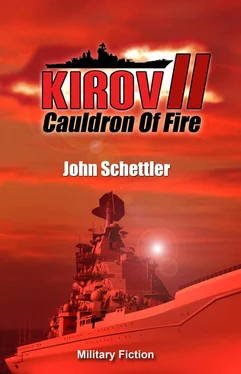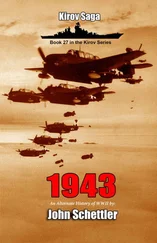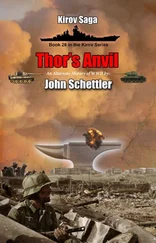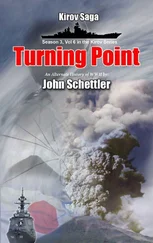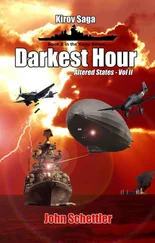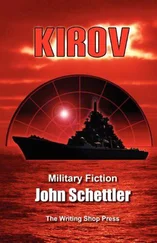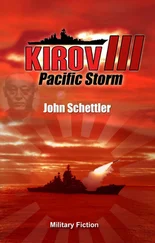“An eagle, a ship, the fifth of the war,” he muttered aloud. He was sure of his hunch now. HMS Eagle was the name of a British aircraft carrier operating in the Med during 1941 and 1942. She was found by a German U-boat that slipped inside her destroyer screen and the carrier was hit by four torpedoes broadside, keeling over and sinking in a matter of minutes. There! He had the reference now, and he had slipped in a photograph of the from page of the Daily Telegraph when the story broke in England under the glaring headline: “Fifth Aircraft Carrier Lost.” He squinted at the blurry text, reading:
“Admiralty communiqué this afternoon announced that the aircraft carrier H.M.S. Eagle has been sunk by a U-boat in the Mediterranean. A large number of the ship's company are safe. Next of kin will be informed as soon as details are received.
H.M.S. Eagle , 22,600 tons was commanded by Captain L. D. Mackintosh. She was begun by Armstrong Whitworth as a battleship for the Chilean Navy in 1913, but in 1917 Britain purchased her for 1,334,358 pounds and she was commissioned for trials as an aircraft carrier on April 13, 1920.
The last British aircraft carrier to be lost was Hermes , which went down last April in sight of Ceylon, sunk by Japanese bombing. Since the outbreak of war three others have been lost. The first was Courageous , torpedoed in September, 1939. Glorious was lost in 1940 after an action with the Scharnhorst and Gneisenau off Norway, and the third was Ark Royal .”
Eagle was the fifth carrier lost in the war, thought Fedorov. He had been correct! But oddly, when he checked the date of the article it read August 12, 1942, a full year after their last dreadful ordeal in the North Atlantic. Since then they had vanished into to some unknown future time where blackened cinders seemed to be all that remained of the world. They had cruised across the whole of the Atlantic and Mediterranean Sea, and their chronometer now read August 20. Yet checking his references it was clear that the Eagle had been sunk August 11, 1942 at 1:15PM, and that story in the Daily Telegraph had come out a day later. The dates did not match up, and he was suddenly confused.
The attack by that plane, clearly not a modern aircraft of any sort, and the sudden change from darkest night to mid-day sunshine convinced him that they were indeed outcasts in another time again. Was Nikolin receiving a radio story about an event that happened weeks ago? Or was the event current, happening now, and a clear signpost to their present position in time? He needed more information, and he looked to his radioman eagerly for any further news.
He stood up, feeling the urgency of the moment and nagged by the realization that he should be on the bridge. As he did so he noticed a photo of the Admiral and his wife together there on the nightstand, and the thin tracings of pen on paper. The Admiral had been writing a letter, it seemed, and Fedorov had been so intent on getting his hands on the Chronology of the War at Sea that he did not even notice it until he stood to leave. He passed a brief moment tussling with the temptation to read the letter. The clear salutation was written at the top in a firm hand, “My Darling Wife….”
He smiled to think that if the Admiral had begun this letter earlier, when they were in the heat of action in the Denmark Strait, the woman had not even been born yet! And if he composed it in recent days it was clear that she could not have survived the devastation they had seen as they cruised from one blackened shore to another.
He was touched by the moment, but his thoughts suddenly left him feeling very alone. Every man finds his comfort somewhere within, he realized. Even the Admiral needed someone to hear him out on the long, empty nights aboard ship, lost as they were in this impossible dilemma, so he wrote to his unseen wife. Every man held on to something—memories, places, people he had known and loved, all wrapped up in that nurturing inner place he called “home.”
Is there any place in this world where my heart can be at ease, he wondered? He had left no sweetheart behind when he sailed. His books and his history were his only true companions—the faces and haunting echoes of men, all long dead. He knew them so well that they often seemed more real and vital to him than his shipmates, and now here he was, thrown like a teabag into this hot water of time and in their very midst! At this moment, he realized with his sharp grasp of the history, Churchill was probably sitting down with Stalin in Moscow, and ready to break the news to him that there would be no second front in the west any time soon—if this was the year and month he now suspected.
The Eagle had been sunk on August 11, 1942. He had to be sure, and that pulsing urgency snapped his reverie and set him moving again, out the door and on his way to the bridge.
~ ~ ~
An hourlater Fedorov had the answer to the many questions circling in his mind. Nikolin had been monitoring radio traffic closely, and the bands were slowly clearing up. He got hold of snippets of new broadcasts, and segments from the BBC. One after another they began to paint the gruesome new picture that Kirov now found herself in. The German 6th Army had just crossed the Don and captured the town of Kalach as they drove for their ill-fated attack on Stalingrad. Further south Operation Edelweiss was in full swing as well, and the Russians had lost the oil fields of Maykop as they fell back on the Black Sea coastal ports in considerable disorder.
There were other gleanings, smaller engagements that were given passing mention in the news stream. In the South Atlantic a U-boat attack sunk Norwegian SS Mirlo and all 37 crew members abandoned ship in 3 lifeboats to be picked up by the British sloop HMS Banff . Fedorov was able to hone in on the exact time and place of that attack in his research library: 2:27 PM, some 870 miles west of Freetown, Sierra Leone—the work of U-130. The night raid on Mainz by 154 RAF bombers was also reported, all events that had occurred on Aug 11, 1942. The evidence mounted to the conclusion that Kirov had slipped into the cauldron of fire once again.
Yes, thought Fedorov, out of the frying pan of the North Atlantic and into the fire of the Med! But they had lost all the days they had sailed in that black oblivion of the future. They had never really determined what year they had been in when Volsky set the ship on a course across the Atlantic, but now they were back, just a few days after they had disappeared in that first engagement with the Royal Navy, but a full year had passed in the war while they were gone. And this time there was no easy option to turn off into the wide expanse of the Atlantic and avoid conflict. This time they had sailed right into the bottle. There were only three ways out of the Mediterranean Sea: Suez, the Bosporus, and Gibraltar, and none of the three would be easy sailing. They had been sighted and attacked in the very first seconds when they emerged in this new time frame, and Fedorov had little doubt that they would soon be facing the most difficult decisions of their lives.
The young Executive Officer was finally convinced of the where and when of their present fate. That had been the easy part for him. He was a willing believer after all they had been through, and there was no Karpov on the bridge to oppose his speculation this time. Now he had to decide what to do about it, and more than ever he wished Admiral Volsky was sitting there in the command chair. What should he do?
The other men on the bridge were watching him, their attention moving from their radar screens and equipment to his own fitful activity near the navigation station. They could see the furrowed brow and dark eyes as he flipped through reference books, and peered at data stored on his pad. The more they watched, the more it became evident that Fedorov was very worried about something.
Читать дальше
